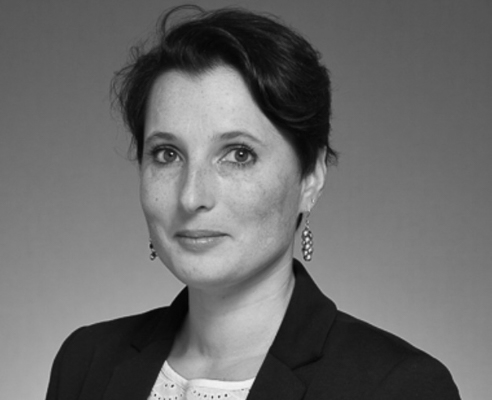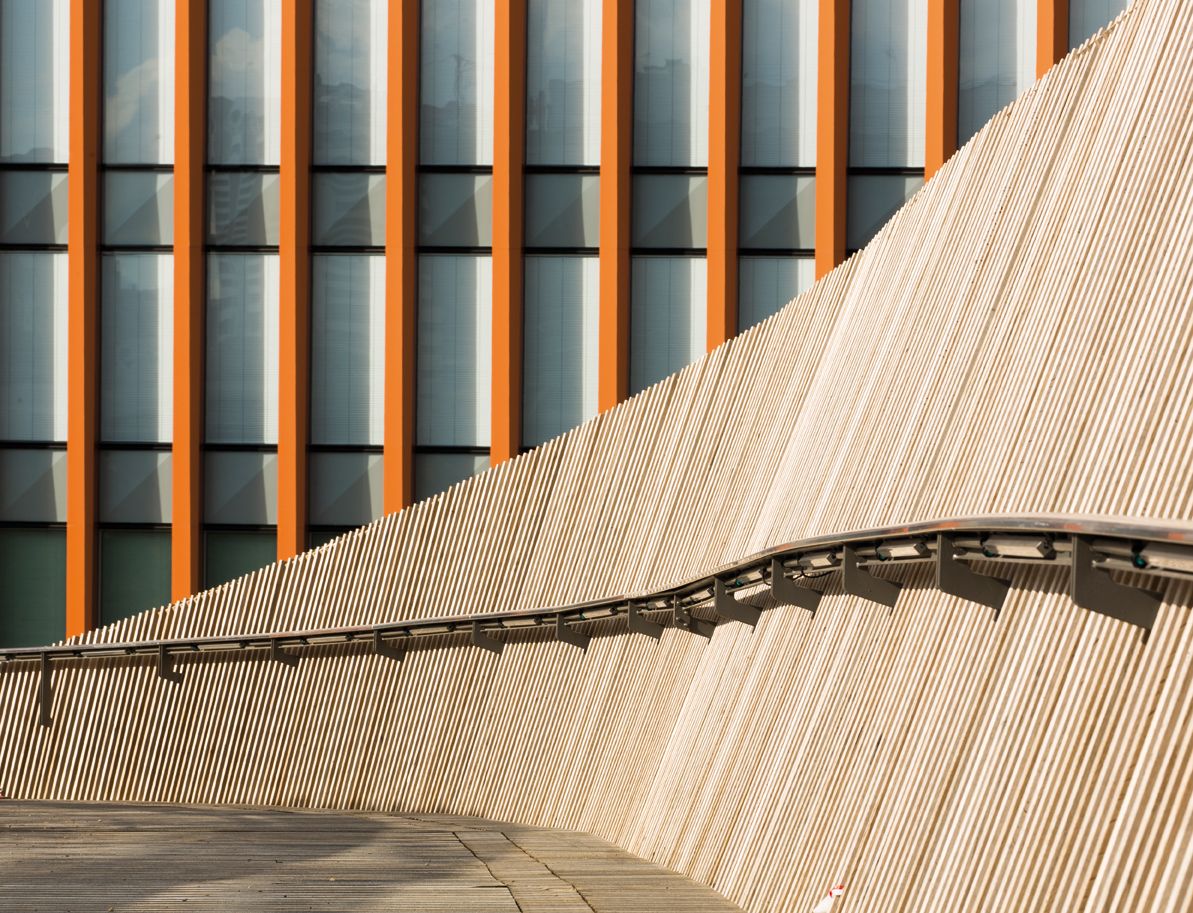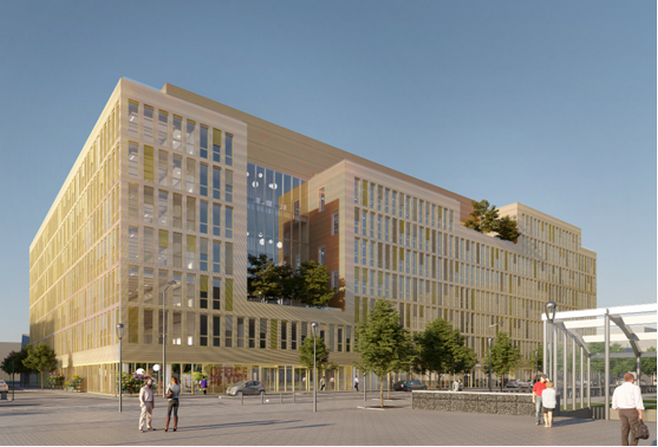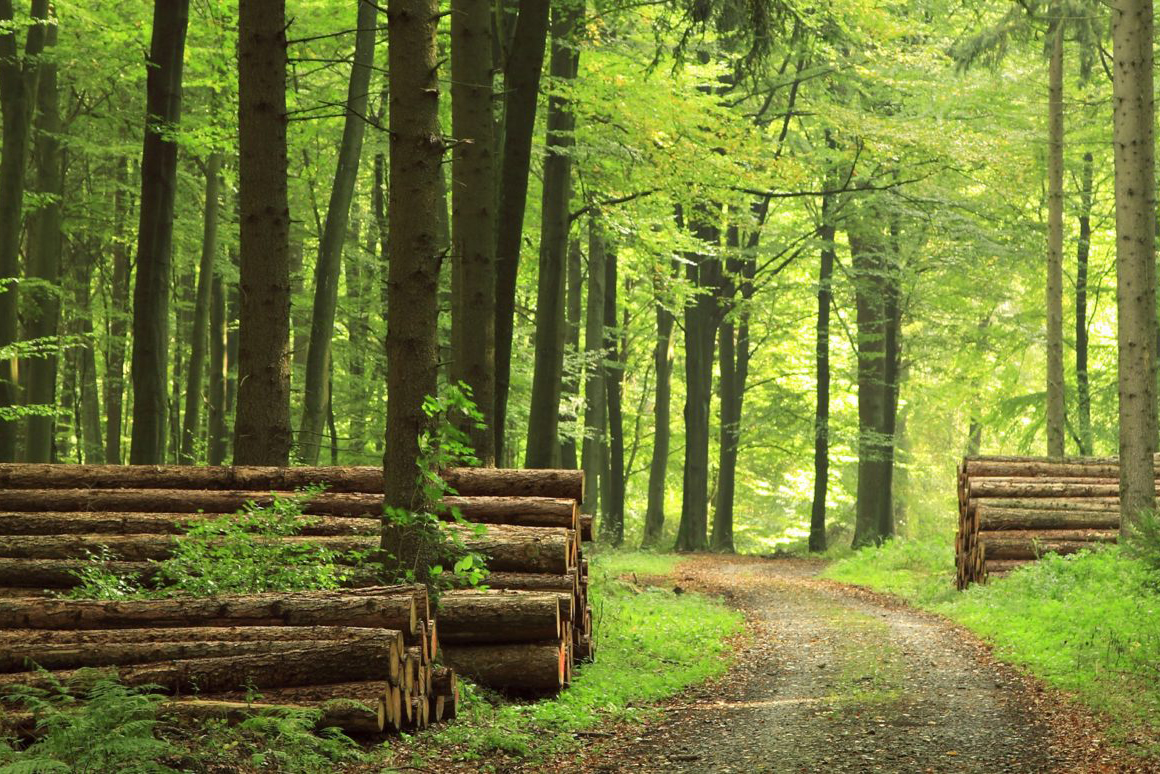
CÉLINE LAURENS
Fasten the energy and ecological transition of the building sector
Céline Laurens is a leading expert in territories, thanks to a cross-disciplinary career always linked to urban ecological footprint and Great Paris’ development. In September 2019, Céline Laurens took over the executive management of Francîlbois.
Francîlbois is an interprofessional organisation that brings together all the Paris Region’s wood and forest sector stakeholders. The organisation campaigns for wood construction, which has many advantages, including the ability to accelerate decarbonation of the building sector.
At Les Grandes Idées, we are glad to have met Céline Laurens to share with you the major challenges of the environmental transition of the building industry, the key parameters and figures of wood construction and the balance between consumption and resources in our forests.
Hello Céline,
Could you tell us about your career path and your role since September 2019 since you lead Francîlbois?
I have studied urban planning. For the last ten years, I have worked on the Great Paris issue. I worked for the Île-de-France Region, the City of Paris, within the Mayor’s staff, then in June 2015, I joined the Olympic and Paralympic Games (OPG) mission in the General Secretariat of the City of Paris. There I worked on the societal and environmental impact of the OPG in the Great Paris and I contributed to the environmental strategy of Paris in its bid to host the games in 2024.
Quickly enough the issue of wood construction arose. Our objective was to reduce our carbon footprint by 55% compared to the London 2012 OPG. After Paris won the 2024 Games in 2017, I joined SOLIDEO (the society responsible for delivering the equipment for the 2024 OPG) as a Director of Ambition and Legacy. I took part in the development of major societal strategies for the Games (public participation, employment, inclusion, universal accessibility) and in the writing of the specifications for environmental excellence. There, for a year and a half, I was able to raise issues and seek for answer from the timber sector.
This meeting with the timber industry interested me in so much that, I switched in September 2019 to the timber industry and joined Francîlbois under the chairmanship of Paul Jarquin (CEO of REI Habitat) to restructure the industry and meet the demands of project owners and authorities in Île-de-France. My path has enabled me to learn about the problems encountered by developers and to be able to build solutions and offers for project owners.

Claude-Bernard Gateway, Paris-Aubervilliers (Île-de-France)
What are the major challenges to take up for Francîlbois in the years to come ?
In 2015, the COP21 and Paris’ Agreement arose awareness on the very crucial carbon issue. Since then, the new generation has been thinking more through the prism of carbon footprint and territories mutation. There is an evolution, a transition is taking place. It creates a dynamic in the field of wood construction. It is really becoming a topic of interest. The players are ready to get involved and it is the right time!

Pulse at Aubervilliers
The major challenge is to bring about real systemic change. We do not build and design in wood as we build and design in concrete. That is why we must initiate an organisational change within the culture of design and construction. The entire chain must change its working habits to move toward eco-construction. And this must be done as early as possible through the training of architects and future employees of major companies such as Bouygues or Vinci. We have to face the concrete lobby and remind everyone that, beyond the carbon issue, the sand used to make concrete is not a renewable resource whereas the wood is.
Our major challenges are thus:
> train the entire sector for a systemic change;
> convince project owners to dare to include wood to their specifications (by creating a wood-construction charter for example, and support them in this new process);
> help manufacturers of the timber industry (professionals in the upstream forestry sector, sawmills, carpenters) to get ready to meet this new demand.
It is a whole sector that needs to be set in motion to boost the order-production cycle. To success, we need to structure the message, speak with one voice and this is what we do with the wood-construction forum which will take place at the Grand Palais, for the first time in Paris.
This leads to our last great challenge: to adopt a wide and mainstream speach. There are some myths to debunk. People are often scared of cutting down trees, but it is a mistaken vision of forest management. Today, most French forests are sustainably managed. There are regulatory schemes and certifications (PEFC and FSC) that frame this management. Cutting and reforestation, i.e. the principle of regeneration, are part of the life of the forest when it is in productive use. Concerning the uses of wood in construction, the sector still suffers from the myth of the Tree Little Pigs, where wood and straws ae shown to be less solid than brick. However, there are no structural problems related to wood construction. In Canada and Sweden for instance, most of buildings are made in woods. There are not more fires and structural problems than here. Moreover, the oldest houses in Paris are made of wood. Wood is even more sustainable and resilient than concrete over time.
What are the key figures for wood resources and wood construction sector in Île-de-France ?
In France, there is no resource problem. The wood resources is even under-exploited. Within French construction, only 30% of wood comes from France. Our processing chain is not yet sufficiently developed. But by working on it, we can easily reach 50%. Concerning the major construction figures, in Île-de-France: about 4% of housing is made of wood. This is a little compared to other regions such as the Grand Est where the share of wood in housing construction is closer to 10%.

Forestry
Could you describe in a few words your ideal city for the coming years?
My ideal city is a city which is rebuilding on itself. People talk a lot about the new buildings because it is “sexy”. But I think that to really reduce our carbon footprint, the city would have to be repaired. In other words, not systematically demolished. It is necessary to consider more the refurbishment of what already exists. 80% of the impact stands on the existing city. The topic is less covered because it is more complex and stimulate less imagination. I deeply believe in a subtle city with, for instance, wooden elevation on buildings in Paris where the city can still densify.
My ideal city is also a city that understands where does its resources come from at every levels (construction, food, energy). It is a city which takes into account its external environment to work on the complementarity between the city centre and its surrounding areas: the city of resources and the wood industry is an enlightening example for this. Urban dwellers need to better understand where the materials of their home come from in order to better understand the different uses of forests.
Thank you Céline for your enlightening answers!
